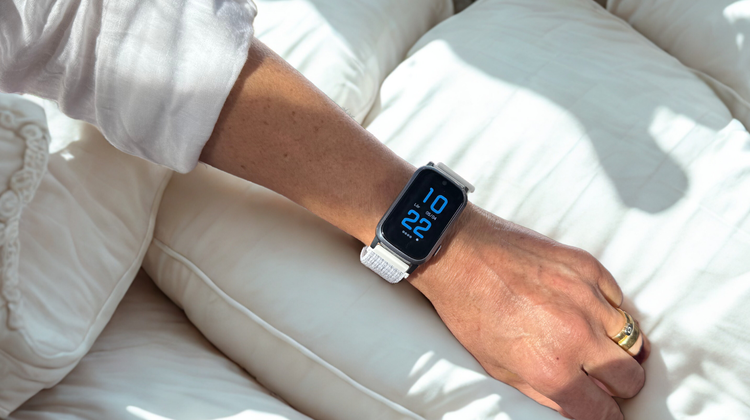Hva er diabetes?
Diabetes affects around 500,000 people in Sweden. The disease causes elevated blood sugar levels and increases the risk of serious complications – including falls, due to nerve damage, vision problems, and blood sugar fluctuations.
Quick Facts About Diabetes
The table below provides a quick overview of diabetes – from the number of people affected to common symptoms, complications, and the increased risk of falls.
| Category | Fact |
|---|---|
| People affected in Sweden | ~500,000 diagnosed, +150,000 undiagnosed [1] |
| Type 1 Diabetes | Autoimmune disease, requires insulin, often early onset |
| Type 2 Diabetes | 85–90% of cases, linked to lifestyle and genetics [2] |
| Common Symptoms | Thirst, fatigue, vision problems, slow wound healing |
| Common Complications | Cardiovascular disease, kidney damage, eye and nerve disorders |
| Increased Fall Risk | Caused by neuropathy, retinopathy, blood sugar swings, muscle weakness [3] |
Causes of Diabetes
There are two main forms of diabetes: type 1 and type 2. They differ in how they develop and how they are treated, but both lead to elevated blood sugar levels that harm the body.
Type 1 Diabetes
Type 1 diabetes is an autoimmune disease where the body stops producing insulin completely. This means insulin must be supplied externally in order to survive.
-
Autoimmune disease where the immune system destroys insulin-producing cells in the pancreas.
-
Insulin production stops completely – daily insulin injections are required.
-
Often develops in childhood, adolescence, or early adulthood.
-
May appear suddenly, sometimes with serious symptoms such as ketoacidosis.
Type 2 Diabetes
Type 2 diabetes is far more common than type 1 and is often linked to lifestyle, although genetics play a role as well.
-
Accounts for 85–90% of all diabetes cases [2].
-
The body still produces insulin, but cells respond poorly (insulin resistance).
-
Develops slowly, often over many years without clear symptoms.
-
Risk factors: obesity, sedentary lifestyle, genetics, unhealthy diet.
-
More common in older adults but increasingly seen in younger people.
Symptoms of Diabetes
Symptoms vary between individuals and can sometimes be so mild that they go unnoticed. This means type 2 diabetes may remain undetected until complications arise.
-
Excessive thirst and frequent urination
-
Fatigue and lack of energy
-
Weight changes
-
Vision disturbances
-
Slow wound healing
-
Recurring infections
Diabetes and Increased Risk of Falls
A lesser-known but important consequence of diabetes is the significantly higher risk of falls. Nerve damage, vision impairment, and blood sugar swings combine to make balance more difficult.
Why does diabetes increase fall risk?
-
Nerve damage (neuropathy): Reduced sensation in feet and legs makes it harder to detect uneven surfaces and maintain balance.
-
Vision impairment (retinopathy): Diabetes can cause vision loss, making navigation more difficult.
-
Dizziness from blood sugar swings: Low blood sugar (hypoglycemia) can cause dizziness, balance problems, and even loss of consciousness.
-
Muscle weakness: Long-term diabetes increases the risk of reduced muscle strength, especially in the legs.
Long-Term Complications
If blood sugar is not controlled, diabetes can cause severe complications throughout the body. Prolonged high blood sugar is the key driver of long-term damage.
-
Cardiovascular disease: Risk of heart attack and stroke is two to four times higher in people with diabetes.
-
Kidney disease (nephropathy): Can lead to kidney failure and dialysis.
-
Eye disease: Diabetic retinopathy is one of the leading causes of blindness worldwide.
-
Nerve damage (neuropathy): Causes pain, numbness, and higher risk of ulcers and amputations.
-
Foot problems: Poor circulation and reduced sensation increase the risk of infections and slow-healing wounds.
Preventive Measures
Although diabetes is a chronic disease, much can be done to reduce the risk of complications and falls.
-
Regular exercise: Improves insulin sensitivity, strengthens muscles, and lowers fall risk.
-
Healthy diet: Rich in vegetables, whole grains, fish, legumes, with limited sugar and refined carbs.
-
Quit smoking and reduce alcohol: Essential for heart and vascular health.
-
Blood sugar monitoring: Keeps the disease under control and prevents dangerous fluctuations.
-
Eye and foot checks: Regular screenings help detect problems early.
-
Fall prevention strategies: Balance and strength training, proper footwear, home safety adaptations, good lighting.
Trygghetsalarm med automatisk fallalarm kan øke sikkerheten for personer med økt risiko for å falle
Sensorems trygghetsalarm er et eksempel på et teknisk hjelpemiddel spesielt utviklet for personer som har økt risiko for å falle. Trygghetsalarmen kan automatisk slå alarm ved fall og deretter ringe pårørende ved hjelp av klokkens innebygde høyttalertelefon med toveis kommunikasjon. Trygghetsalarmen fungerer utendørs og har innebygget GPS-posisjonering slik at pårørende kan se brukerens posisjon på kart i Sensorem-appen.
LES OM HVORDAN TRYGGHETSSALARMEN KAN ALARMERE AUTOMATISK VED ET FALL
Kilder:
- Helsedirektoratet – Diabetes-statistikk
- Diabetesforbundet – Fakta om type 1 og type 2
- Folkehelseinstituttet – Fallulykker og diabetes

